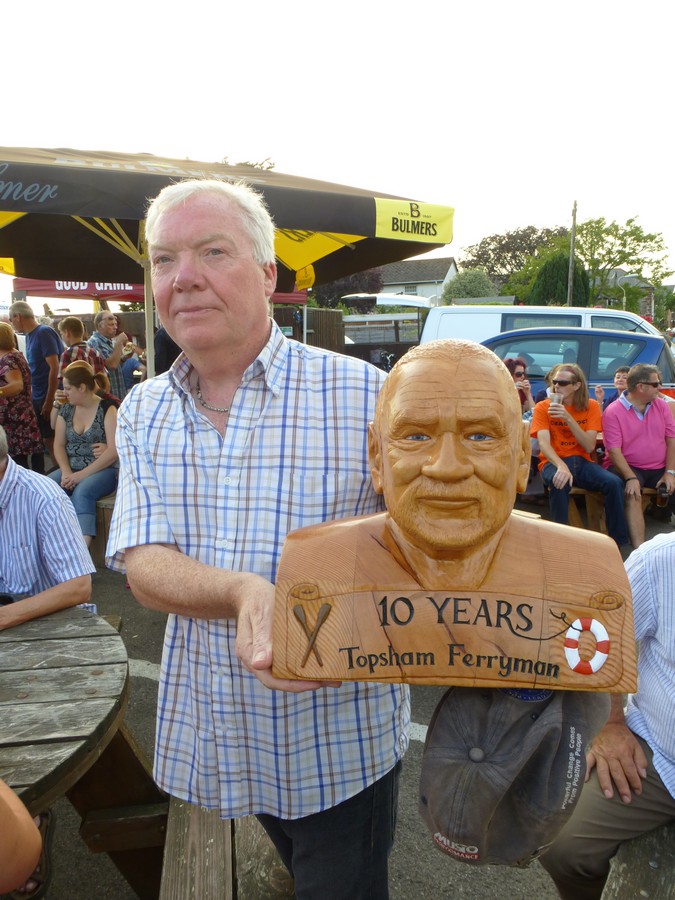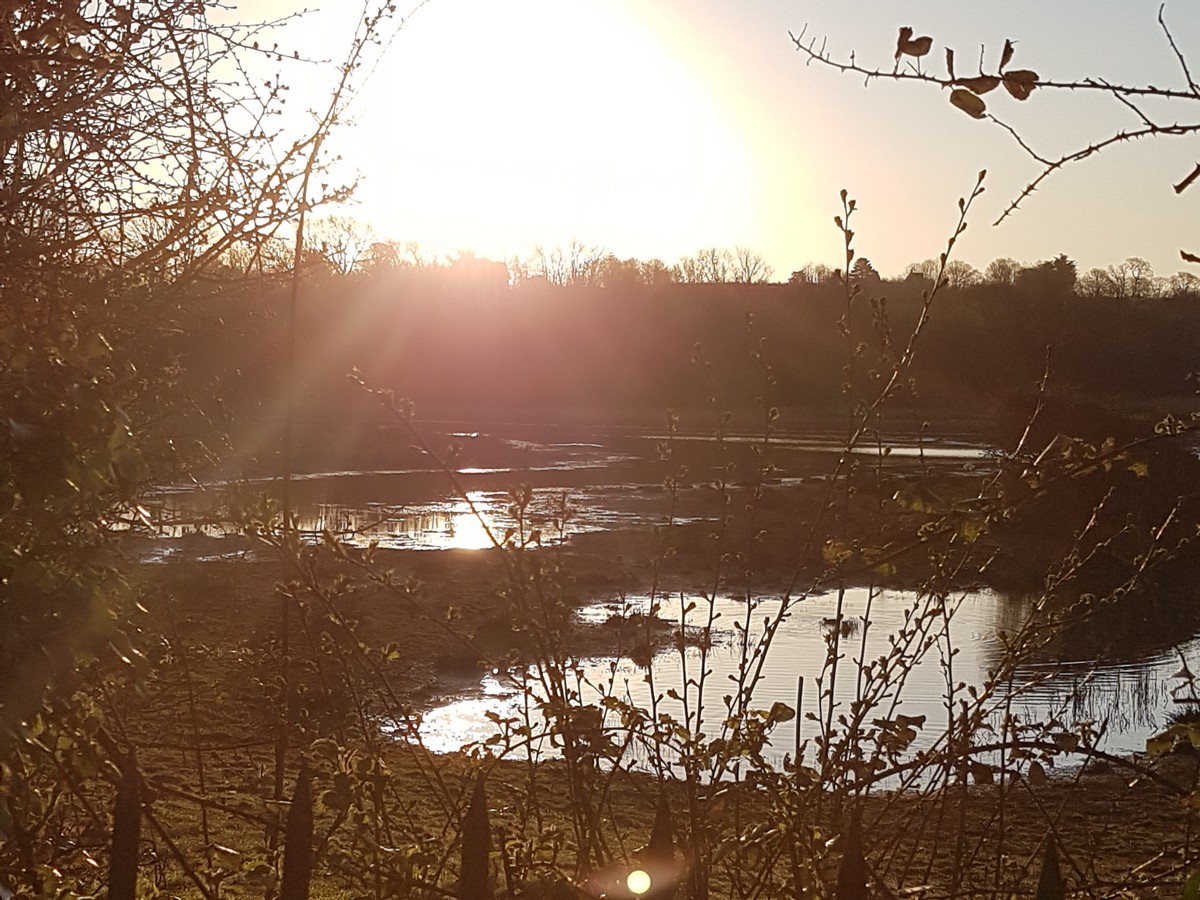The first of a series of walks through my home town of Topsham
Topsham and the River Exe
I live in the tidal town of Topsham in Devon. It’s an ancient trading port on the River Exe, lying in a strategic position between the open sea at Exmouth some five miles away, and the city of Exeter further inland. When the tide is in, the widest stretch of water you can see downriver is about one mile across. At low tide, it’s little more than a channel winding through vast acres of mud.
During the lockdown, I’ve been taking a daily walk around a two mile circuit, past the quayside, up the Strand where the merchants once lived, along the narrow riverside path known as the Goat Walk, around by the bird reserve at Bowling Green Marsh, then back down historic Monmouth St and home via the town centre. At this quiet hour of the very early morning, in the springtime, it has been a truly magical experience.

Let me confess something. I love passing on what I know, and what I have discovered. I also love local history and have read and studied enough to become one of the Town Guides, one of a team offering public walks throughout the summer months. Sadly, we can’t do so this year because of the pandemic. But perhaps on this blog I can show you a few walks around the town, and the stories that go with them.
This is the first therefore in a series of posts dedicated to Topsham, the town and its history. The photos will mostly come from my morning walks, but I’ll pick a few that I’ve taken previously, to fill in any gaps.

The Topsham ferry plies a summer and weekend trade to take walkers and cyclists across the river, to follow the path up to the pub Turf locks. In living memory, though, it was still a key means of transport for nurses to get over to Exminster for their shifts at the mental hospital there, and for Exminster residents to come to work in Topsham.


Many ships were built in Topsham over the centuries, and there’s still one boatyard left today, run by the appositely named Trout family. The old hull of the ship is said to be a relic, abandoned after the boat builder died tragically.

The Lighter Inn was once the Customs House on the quayside. Nowadays it’s a popular pub with plenty of outside tables, a good vantage point for watching morris-dancing displays, music bands and other outdoor festivals over the summer months. To one side is an aged Thames barge, of the kind that used to sail upriver to Topsham. It’s now being lovingly – and very slowly! – restored.
Sailors came to and from Topsham from countries across the globe, especially Holland, Spain, and Portugal – at some periods, you could apparently hear more Portuguese than English spoken in the town! From the end of the 17th century, Topsham fishermen sailed to Newfoundland, where they had a summer colony. They fished for cod, salted it, and often came home via the Mediterranean to sell it en route. Rewards could be high, but the risks were great.


The Strand is worthy of a future post, when we walk this way again, but for now I’ll just point out the beautiful merchants’ houses dating from the 17th and 18th centuries. The Dutch-style gables were inspired by their frequent trips to Holland, and plenty of narrow Dutch-made bricks were used in the buildings. The town Museum is housed here in a merchant’s house.

When you reach the end of the Strand, you can be faced with either an eternity of water or a huge expanse of mud – the town is nicknamed ‘Topsham-on-the-Mud’. Where does water end and sky begin? Alternatively, how could a boat possibly still navigate the channel at low tide? The answer is: only until a certain point in the ebbing tide. The other town ferry which runs up to Turf Locks has a very strict timetable, and if you miss your boat back from the pub there, you could be in for several more rounds before it returns. Turf pub was where sea captains used to wait up until the tide was right for them to put to sea, and it’s said that upstairs, you can still see the graffiti which they idly scratched into the 18th century windowpanes.

For a while, we rented a flat along the Strand, and amused ourselves on summer evenings listening to the screech of brakes as visiting drivers suddenly realised that they were approaching a dead end, leading straight into the river!

Pedestrians have it a little easier, since there is a narrow path, built up the side of the river in 1911. It’s a useful route, since you can get around to the other side of the town this way. Previously, there was only a path along the shore at low tide. However, rather than being grateful for the new walkway, the locals complained it was ‘only wide enough for a bleddy goat’. Hence it’s known today as The Goat Walk. It’s still the scene of contested space as joggers try to overtake pedestrians, and cyclists defy the ban to ride down there. But it’s now a much-loved feature of the town.

Bowling Green Marsh is now a Nature Reserve, with a renowned and popular bird hide. In winter you can see large flocks of avocets (very elegant, like small black and white flamingos), hundreds of curlews and godwits, Brent geese, redshanks, wigeon and teal. Rarities appear, such as a spoonbill or a long-billed dowitcher. Little snipe like furry humbugs hide in the long grass; herons stalk the water, rows of egrets stand and contemplate life, and sometimes a marsh harrier or even a migrating osprey visits. This wonderful reserve has been created out of old marshland which lies along the banks of the River Clyst, which flows to meet the Exe at the top of the Goat Walk. Previously, it plainly had something to do with bowling, and definitely once contained the local football pitch. Less amusingly, it was also a hunting ground for those shooting ducks and wildfowl.

The lane is bursting with song from the smaller birds – wrens, a chiff chaff, robins, doves and pigeons, a magpie, tits of all kinds, with percussion supplied by a woodpecker industriously pecking away at an old oak tree every morning. It’s time to go home for breakfast.
If you’re interested in tidal rivers, you might also like to read Ebb & Flow: Notes on the Tidal Thames
Local sites of interest include Topsham Museum ; Love Topsham ; and the Topsham Society
